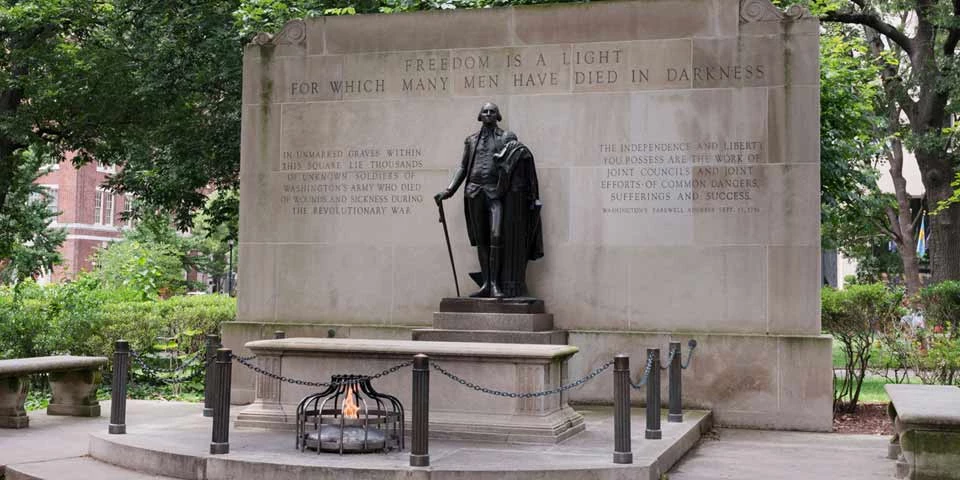
NPS photo One of five parks within William Penn’s “Greene Countrie Towne,” Washington Square was originally known as Southeast Square. By the 18th century, it had become a burial ground for poor Philadelphians; American and British soldiers during the British occupation of Philadelphia (1777-78); and victims of yellow fever. The square served the living as well; enslaved and free African Americans socialized here, and the city later landscaped the grounds as a public park. In 1825, the square was renamed in honor of George Washington. Use this Washington Square visiting information to plan your visit; it's just one block from Independence Hall. Burial GroundWilliam Penn patented this square in 1706 as a Potter’s Field, or a public graveyard for the poor. Free and enslaved Africans were interred here alongside suicide victims, those unaffiliated with a church, and strangers to the city. More than 60 Native Americans who died from smallpox were buried here in 1763. During the Revolutionary War, Potter’s Field served as a military cemetery for British and American soldiers. John Adams walked these grounds in April 1777, where “…upwards of two Thousand soldiers had been buried…” Victims of the yellow fever epidemic, numbering more than 1300, filled the remaining space in the burial ground in 1793. The city closed Potter’s Field to burials in 1794.Gathering PlaceThis square served not only as a burial ground for the dead, but also as a gathering place for the living. Free and enslaved Africans socialized here prior to the American Revolution, sometimes gathering to protect the remains of their loved ones from being exhumed for dissection in Dr. William Shippen’s anatomy lectures. President George Washington and others gathered here in 1793 to witness the first hot air balloon flight in North America. After 1815, the square began to resemble an urban park with public walks, drawing scores of Philadelphians through the years to stroll above the unseen remains of 18 century residents.The LandscapeOriginally a burial ground and cattle pasture in the 18th century, the square’s natural landscape and built environment changed dramatically in succeeding years. Fishing and wild duck hunting gave way to strolling as rows of Lombardy poplars and public walks replaced the original streams and duck pond. Today, there are more than 30 species of trees. The landscape also includes an 1869 watering trough for horses and dogs and two guard houses once used by the Fairmount Park Guard in the early 20th century. Somber ceremonies continue to take place at the Tomb of the Unknown Revolutionary War Soldier, designed by architect G. Edwin Brumbaugh in the 1950s. This memorial contains the remains of an unknown Revolutionary War soldier who perished in the fight for independence. An eternal flame honors the high price paid by soldiers in the name of freedom. Learn more about the memorial and the park's response to graffiti that occurred there in 2021. |
Last updated: February 7, 2024
